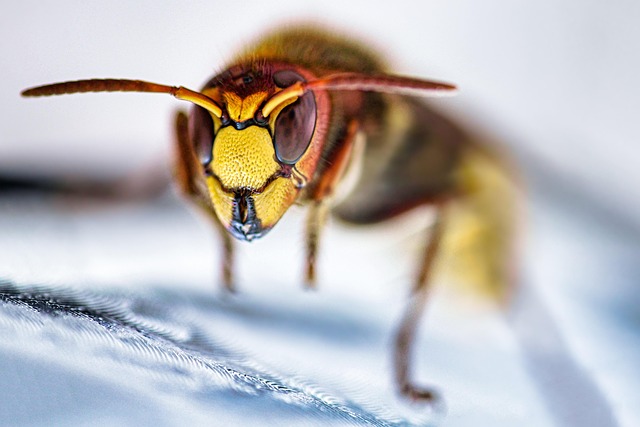Wasp infestations require customized wasp control plans due to their social structure, habitat preferences, and unique behaviors. These tailored strategies involve identifying specific wasp species and nesting sites to deploy targeted methods responsibly. Professional exterminators use advanced techniques, eco-friendly treatments, and prevention measures to eliminate current infestations and prevent future ones, ensuring safety for residents and local wildlife. Regular inspections, clean property maintenance, sealing entry points, natural repellents, and scheduled professional services are key components of an effective customized wasp control plan.
Wasp infestations can be a nuisance, posing health risks and disrupting outdoor activities. Understanding these pests is the first step towards effective management. This article explores comprehensive strategies to eliminate wasps, focusing on tailored control plans that consider unique behaviors and habitats. We delve into safe, proven treatment methods and offer prevention tips for future infestations. By implementing customized wasp control plans, homeowners can reclaim their spaces, enjoying a peaceful environment free from these stinging intruders.
Understanding Wasp Infestations: Behavior and Habitat
Wasp infestations can be a significant problem, often arising from their unique behavior and habitat preferences. Wasps are social insects that live in colonies, typically with a queen who lays eggs and workers who perform various tasks like foraging for food and protecting the nest. Understanding this hierarchical structure is crucial when developing effective wasp control plans.
These insects are attracted to sweet substances and often build nests in secluded areas such as trees, bushes, attics, or even indoors. Customized wasp control plans should consider these behaviors and habitats to ensure a safe and efficient elimination process. By identifying the specific type of wasp and their nesting location, professionals can employ targeted methods that minimize harm to both the insects and the environment.
Customized Wasp Control Plans: A Comprehensive Approach
Wasp infestations can be complex and unique to each property, which is why a tailored, or customized wasp control plan, is essential for effective elimination. These plans go beyond one-size-fits-all solutions by taking into account the specific type of wasps, their nesting sites, and the extent of the infestation. Pesticide applications, for instance, may vary depending on whether the wasps are ground-nesting or tree-nesting species.
A comprehensive approach involves a combination of techniques such as inspection, identification, exclusion, and targeted treatments. Professional exterminators use advanced equipment and knowledge to detect hidden nests and employ eco-friendly methods that minimize environmental impact while ensuring the safety of residents and pets. This personalized strategy not only addresses the current infestation but also prevents future reoccurrences, offering long-term relief from these pesky intruders.
Safe and Effective Treatment Methods
Wasp infestations can be a nuisance, but there are safe and effective treatment methods available to eliminate them. Customized wasp control plans are designed to target specific needs, ensuring minimal environmental impact while swiftly addressing the issue. Professional exterminators employ a range of techniques, from targeted pesticide applications to more natural solutions like trapping and exclusion methods.
These customized plans consider factors like wasp behavior, nest location, and surrounding environment, providing lasting results. By combining scientific knowledge with eco-friendly practices, these treatments offer a balanced approach that keeps your space safe for both residents and local wildlife.
Prevention Strategies for Future Wasp Infestations
To prevent future wasp infestations, consider implementing a customized wasp control plan tailored to your specific needs and environment. Regularly inspect your property for any signs of wasp nests or activity, as early detection is key to effective prevention. This includes thoroughly checking attics, walls, and crevices where wasps may build their nests. Maintaining a clean and clutter-free space, especially around food sources like garbage cans or sweet treats, can significantly deter wasps from making your property their home.
Additionally, sealing off any entry points such as gaps in windows, doors, or ventilation systems will hinder wasp access. Using natural repellents like citronella candles or lavender plants around your living spaces can also act as a deterrent without resorting to harsh chemicals. Regular professional inspections and treatments are essential components of a long-term prevention strategy, ensuring that any wasp activity is addressed promptly before it becomes an infestation.
In addressing wasp infestations, a multi-faceted approach is key. By understanding wasp behavior and habitat (Understanding Wasp Infestations), implementing tailored solutions through customized wasp control plans (Customized Wasp Control Plans), and adopting safe yet effective treatment methods (Safe and Effective Treatment Methods), homeowners can effectively eliminate current problems and prevent future invasions (Prevention Strategies for Future Wasp Infestations). This holistic strategy ensures a safer, more secure living environment.
